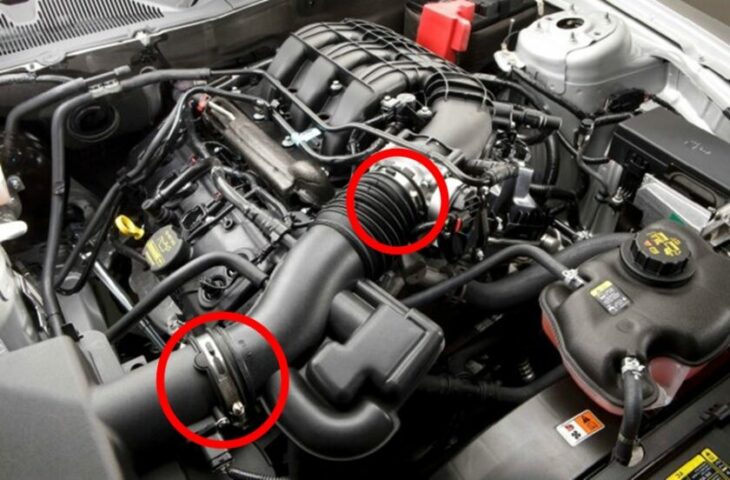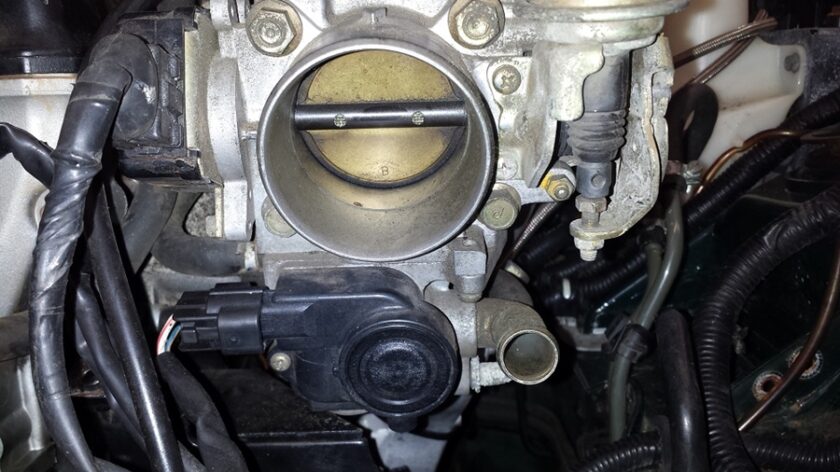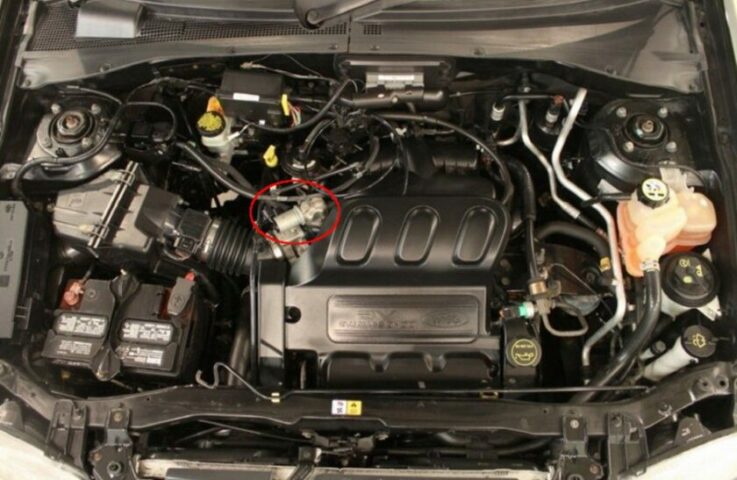Does your car rev high when you start it? Is your car surging when it idles? Or does it stall out when you come to a stop? The ideal car rev on a cold engine should be below 1000 RPMs (around 800 RPMs).
If your car revs above 1000 RPMs when you start it, that is something that you should look into.
I will show you how to diagnose and fix this issue on your own, without any prior mechanic experience.
Key Takeaway
- A car may rev high when started due to factors such as the engine warming up, a dirty idle control valve, or a faulty throttle sensor.
- It is normal for a car to rev high when starting, with the engine RPM going up to about 1200 to 1400 RPM and then gradually coming down.
- To fix a car that high revs when starting, potential solutions include checking and cleaning the throttle body and idle control valve.
Why Does My Car Rev High When I Start It

Your car might rev high when you start it due to factors like cold weather, issues with the idle air control valve, or problems in the throttle system.
When you start your car and notice that it’s revving high, this could be a result of several distinct issues.
One prevalent reason is cold weather; combustion takes place faster in an engine during cold starts, leading to higher RPMs.
Another possible cause is a malfunctioning idle air control valve. This component controls the engine’s revolutions per minute (RPM) while it idles at a stop.
If it’s faulty, it can cause the engine to rev high upon starting. Additionally, problems within the throttle system, such as a stuck throttle or a malfunctioning sensor, can also lead to this issue.
It’s important to have these potential problems checked by a professional mechanic to ensure your vehicle’s optimal performance and safety.
Is It Normal For a Car To Rev High When Starting?
Yes, it can be normal for a car to rev high when starting, especially in cold conditions as the engine works to warm up, but if it happens consistently regardless of the temperature or driving conditions, it may indicate a mechanical issue.
In cold weather, your car’s engine might rev high upon starting as part of its function to reach the optimal operating temperature quickly.
This is typically normal and should resolve as the vehicle warms up. However, if your car consistently revs high upon starting, regardless of the weather or how long it’s been sitting, it could point to a problem.
This could be due to a malfunctioning idle air control valve, which regulates the engine’s idle speed, or issues with the throttle system such as a stuck throttle or a faulty sensor.
These problems can affect your car’s fuel efficiency and overall performance.
If you notice persistent high revving when starting your car, it’s advisable to have a professional mechanic inspect it to diagnose and fix any potential issues.
What RPM Should a Car Start At?
A car should typically start at an RPM range between 700-900 for smaller engines and 500-650 for larger ones, but this can vary based on various factors like the vehicle’s make and model, and the environmental conditions.
When you start your car, the revolutions per minute (RPM) on the tachometer should generally fall within a specific range.
For smaller car engines, this is usually between 700 and 900 RPM, whereas larger engines may idle at a slightly lower range of about 500 to 650 RPM.
This is the typical idle speed when the engine is warm, in park, or neutral, and not under load from accessories such as the air conditioner.
However, these figures can vary depending on several factors, including the specific make and model of your vehicle, its age, and the condition of its components.
Environmental conditions, such as cold weather, can also cause higher RPMs upon starting as the vehicle works to reach its optimal operating temperature.
If your car consistently shows a significantly higher or lower RPM when starting, it’s worth having it checked by a professional mechanic, as this could signal an issue that needs addressing.
How To Fix a Car That High Revs When I Start It
If your car revs high when you start it, which is usually above 1000 RPMs, you could have a dirty throttle body or a dirty air idle control valve.
Both the throttle body and the air idle control valve control the amount of air that gets into the engine.
The throttle body makes sure more air gets into the engine when you press the gas pedal, while the air idle control valve is in charge of supplying the engine with enough air to keep a steady idle.
If the throttle body or the air idle control valve is dirty, that can result in high revs when you start your car.
Here is how to clean your throttle body and the air idle control valve:
1. Gather the cleaning supplies

In order to clean your throttle body and the air idle control valve, you will need a throttle body and air intake cleaner. The one that I use is made by CRC and
. Then, you will need a microfiber towel to wipe the throttle body and the air idle control valve.2. Remove the air filter housing

The air filter housing is easy to locate and remove. It is usually found on the right side of the engine and is secured with clamps. Unsnap the air filter housing and pull it up.
3. Remove the ductwork

After you remove the air filter housing, you will have to remove the ductwork that goes from the air filter into the throttle body. Usually, the ductwork is secured with screws and clamps. Remove the screws and pull the assembly out of the way. At this point, you should have an exposed throttle body.
4. Clean the throttle body

Depending on your car, you can have one or two throttle bodies. Nevertheless, the cleaning process is the same. Open the throttle body by pressing the gas pedal or manually by pulling the throttle body line and spray the throttle body cleaner. Make sure to spray the top, bottom, and sides. Then, grab a clean microfiber towel and wipe the inside of the throttle body. If the throttle body is very dirty, repeat the same process.
5. Clean the air idle control valve

The air idle control valve is located on top of the throttle body. The air idle control valve is usually secured with screws. Remove the screws that hold it in place and then take the assembly off to clean the inside of it. Spray the air idle control valve with the throttle body cleaner and then wipe it with a clean microfiber towel.
6. Let it dry for half an hour
It is a good idea to just leave your car as it is to dry for half an hour before you put it back together. Otherwise, the car will be full of cleaner and be very hard to start.
7. Reinstall the parts
Reinstall the air idle control valve assembly. Then, attach the ductwork and secure it with the clamps. Finally, reattach the air filter housing and snap it.
8. Start your car
Start your car and let it run for 20 minutes. The car will probably rev high in the beginning because of the throttle body spray cleaner. You might also notice smoke coming out of the exhaust. But, don’t worry. It will all be gone after 20-30 minutes. Your car should now rev normally under 1000 RPMs.
What RPM Should a Car Start At?
Cars with up to a 2.0-liter engine should start with 500 to 800 RPMs. Cars with engines above 2.0-liter engines should start with 550 to 750 RPMs.
Usually, for most engines, it is perfectly fine to start with 600 to 1000 RPMs. As the engine warms up, the RPMs should drop for at least 100 RPMs from the original starting RPMs.
The RPM stands for revolutions per minute. When you start your car, especially in cold winter, the engine RPMs will be higher than usual.
That’s because the engine works even harder to get to the optimal working temperature. The RPMs should go down as the engine warms up. If your car has a rough idle even when the engine reaches the optimal temperature, you might have a dirty throttle body or an air idle control valve says Bryan’s Garage.
What RPM Should My Car Be At 60mph?
Your car RPMs while driving at 60mph should be between 2400 and 2600 RPMs in 5th gear. This is also known as the cruising speed and at this speed, gear, and RPMs, your car is the most fuel-efficient.
FAQs
Q: What causes high revs in an automatic car?
A: In automatic cars, high revs can be caused by a malfunctioning idle air control valve, a faulty throttle body, or a problem with the engine control unit. Other possible causes include a vacuum leak, a faulty sensor, or a problem with the automatic transmission.
Q: Why does the rpm go high when driving?
A: The rpm can go high while driving due to a variety of reasons. Some common causes include a faulty throttle body, a malfunctioning idle air control valve, or a problem with the engine control unit. Other possible causes include a vacuum leak, a faulty sensor, or a problem with the transmission.
Q: Why does my car idle at a high rpm?
A: If your car is idling at a high rpm, it could be due to a fault in the idle air control valve, a problem with the throttle body, or a malfunctioning sensor. Other possible causes include a vacuum leak, a faulty engine control unit, or a problem with the fuel injector.
Q: What is the function of the idle air control valve?
A: The idle air control valve is responsible for regulating the idle speed of the engine. It controls the amount of air that enters the engine when the throttle is closed, and adjusts the idle rpm accordingly.
Q: Why does my engine rev high when it is cold?
A: When an engine is cold, it may rev high in order to warm up quickly. This is a normal behavior and is controlled by the engine control unit. Once the engine reaches its optimal operating temperature, the idle rpm should return to normal.
Q: What should I do if my car starts revving in park?
A: If your car starts revving in park, it could be due to a problem with the idle air control valve, the throttle body, or the engine control unit. It is recommended to have your car checked by a qualified mechanic to diagnose and fix the issue.
Q: What can cause the engine to rev high without pressing the accelerator?
A: There are several possible causes for the engine to rev high without pressing the accelerator. These include a faulty idle air control valve, a stuck throttle body, a vacuum leak, or a malfunctioning sensor. It is best to have your car inspected by a professional to determine the exact cause.
Q: Why does my car rev high when I start it but then goes back to normal idle?
A: If your car revs high when you start it but then goes back to normal idle, it could be a result of the engine’s cold start strategy. Many vehicles have a cold start program that increases the engine rpm to help with initial warm-up. Once the engine reaches its optimal temperature, the idle rpm should return to normal.
Q: What should I do if my car is revving while driving?
A: If your car is revving while driving, it is best to have it inspected by a mechanic as soon as possible. This could be caused by a variety of issues such as a faulty throttle body, a malfunctioning idle air control valve, or a problem with the transmission. It is important to diagnose and fix the problem to prevent further damage to your car.
In Conclusion
The causes of a car revving high when starting can vary depending on the age and model of the vehicle, but some potential issues may include an issue with the throttle body, air intake system, fuel injection system, or spark plugs.

